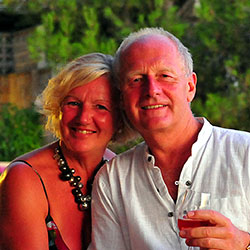There’s no denying that travelling to India can be a major culture shock, especially on your first visit. It’s a huge and bewildering country, with many different religions and cultures, and cities that roar with traffic and bustle with non-stop activity. Simple planning and awareness can reduce this assault on the senses and enable you to anticipate and enjoy your surroundings so that you can’t wait to come back again. Our tips fall broadly into two categories – Advisory and Courtesy.
Advisory
Plan Ahead
Clothing – As always, layers are good as they give you flexibility. Better to travel light and get the Dhobi Wallah to wash and launder your clothes (as long as you don’t value them too highly) than be weighed down by material. Long sleeves for the evening and lighter colours don’t attract mozzies so much. Cottons, wickable materials, shorts, t-shirts, shirts, light summer dresses, light jackets, light jumper, hats, sunglasses, sandals, walking shoes.
Malaria – On the topic of mozzies, in our experience they love sweet smells – so avoid too many deodorants and perfumes. Cover exposed skin and apply repellents before dusk and at dawn – mosquitoes tend to disappear in the daytime unless you sit in dark or very shaded and cool places (street restaurants, stations etc). Chloroquine and Paludrine tablets seem to have been replaced, firstly by Larrium and then by Malorone. Some people have side effects from these tablets (headaches, tummy upset) but the effects are probably better than getting malaria, which can stay with you for life. Malorone is the current favourite and has just come out of patent protection, so you can find genuine alternatives through your pharmacy that don’t cost as much.
Cameras – Pack gear in bags/holdalls that don’t state too clearly what’s inside – why advertise!
Visas – despite recent proposed changes, visas can still be applied and paid for online. Make sure you apply for one of an adequate duration and read the small print carefully as its sometimes difficult to amend applications online or to reach anyone with the ability to help you at the High Commission.
Voltage – When you have it, the electricity supply is 230 V; 2 round pin and 3 square pin Plugs. You will need a voltage converter, and plug adapter in order to use U.S. appliances. We recommend getting a universal adapter and converter kit. Supply doesn’t match demand in India so ‘phasing’ or sharing occurs that distributes power on priority to different areas throughout the day. Larger hotels will have their own generators for uninterrupted supply.
Weather
Clothes will get dusty and dirty, whatever you do. You’ll get hot and tired wherever you go. If you work on the basis (a/c notwithstanding) that from September until February you’ll stand in the sun and avoid the shadows in daytime but wrap up well in the evenings (Temps in the north are between 40-60 F [4-16C] and temps in the south are between 65-85 F [18-30].), whereas from March until June you’ll stand in the shade and avoid direct sun whilst being sometimes uncomfortably warm in the evenings (77- 125 F [25-50 C]), and from June until September you’ll probably avoid India altogether (unless you like being submerged in the monsoons) then you won’t go far wrong, allowing for some variation in regional differences such as scaling the Himalayas! When traveling to the mountain region, the months of March, April, October and November are ideal.
Courtesy
Expect something different
You are going to one of the most diverse, chaotic and fascinating countries on earth. Don’t expect India to adjust to your way of life – be tolerant, interested and patient of theirs and you’ll absorb the true flavours and cultures of India and have a far less stressful time. Anger will solve nothing, be courteous and patient at all times – however trying the circumstances. The Indian people ignore anger as they don’t know how to deal with it.
Avoid burnout
India will get you every time – trying to do too much in too little time. India is amazing but have sensible expectations of your capacity, stamina and endurance. Heat, delay, travel and distance can all have detrimental effects on your ability to enjoy what you’ve flown half way across the world to see. A well planned visit can reveal far more of the unique spirit of India than a rushed or unrealistic itinerary. India will still be there when you’re ready to see the rest!
Get out of the city
Though perhaps a cliché, the only way to get a true sense of India is to visit smaller towns, villages and rural areas. The real benefit is that it’ll get you out of the sprawling and vastly overpopulated cities. Once you’ve cleared your senses, say with a trip into the mountains or slower-moving Kerala in the south, you’ll be far better placed to absorb the famous colour and hospitality of the Indian people.
Wash your hands
Probably the most important lesson to learn. Most infections are self-inflicted. Wash hands regularly as you can transmit germs to your mouth simply by touching your face after you’ve touched cars, trains, railings, souvenirs etc. as well as washing them every time you eat and before every meal. Carry antiseptic wipes just to refresh yourself from time to time.
Watch what you eat and drink
A dodgy stomach is pretty common for first-timers in India. That doesn’t mean you should rule out street food – in fact its often more freshly cooked than smaller hotels and restaurants provide. Try to stick to peeled fresh fruit and foods that have been either boiled or fried. Stay on the bottled water and avoid salads or ice.
Don’t be too precious about your personal space
This isn’t really a popular concept in India. You will be squished on public transport and squashed in lifts. People will ask seemingly intrusive personal questions that you may find intimidating. Remember that this is a wholly different culture and the questions are merely indicative of the locals’ polite interest in you.
Dress conservatively
Be aware that India has many and diverse cultures and religions. You are there as a visitor not as part of an occupying army. Think about how to respect others’ wishes and behaviour and you’ll be respected in return. Covering arms and legs is a simple step towards this. Indians forgive transgressions but you can quickly make a good impression by, for instance, removing your shoes before entering someone’s home. This is particularly important when entering a religious area, such as a temple and if you see shoes outside somewhere, it’s a sign to remove your own.
Watch your feet and hands
Following on from above, feet are considered to be unclean in India, so if you touch something with your feet it’s appropriate to swiftly apologize – so putting your feet up might be relaxing for you but offensive for others. Similarly, eating or passing objects with your left hand is considered unpleasant as only the right hand is used for eating; the left being kept for more basic tasks. If unsure of local customs, keep an eye out for what others do and imitate.
Indian time is relative
The Spanish ‘Manjana’ seems like a term of urgency in India! You could wait an hour in India when you’ve been assured someone will be five minutes. Traffic schedules and other interruptions can also mean that getting around can take a lot longer than expected. Build in plenty of time for unexpected waits and make sure to check opening hours – many government offices and shops close for long lunchtimes. Queues are commonplace and seem to spread out like a funnel – so be aware of where you are in the queue and of others trying to push in – but be courteous but firm as it’s just a game to get to the front first and they’ve had much more practice than you! Remember – you’re on IST – Indian Stretch Time!
Stay safe
As with most cities across the world, our own included, if you look and act like a victim you’ll soon become one. Don’t go into unlit side streets and always stay alert. That doesn’t mean be afraid but simply remain aware of your surroundings. Carry cash securely – preferably in a money belt that is concealed.
Begging
Don’t do it! Seriously though, you are ill equipped to differentiate between genuine need and those who have been deliberately maimed to raise money. Beggars are often ‘pimped’ and see very little of any donation – so if you really want to give you’re better off donating to a recognised charity than making ongoing assessments of every person/child who puts their hand out. A simple but persistent ‘no’ is difficult to maintain but by far the better solution in our opinion to avoid a ‘Pied Piper’ stream of beggars following you everywhere.
Barter
This can be a great deal of fun but at a market can, at times, become an unpleasant, heated exchange. Try to stay cool and treat it as a game. Be prepared to walk away from any transaction as you’ll always find another alternative further down the street or in another town. Be pleasant but firm, and don’t allow yourself to be irritated or intimidated. 50% of asking price is a good result and gives both of you a reward. Government run ‘Emporia’ do not discount or barter.
Shop for wood carvings, fabrics, brassware, copperware, bronzes, silver, fossils and crystals, sandalwood items, paper-mache, paintings and prints, dhurri rugs, dolls, tea, saffron, batiks, carpets, and gems (if you know what to look for).
Bargaining is the norm. Beware of copycat brand-name items and animal products such as skins and horns- they are illegal. And remember to shop at the local markets!
Be prepared for noise
India is like a non-stop fairground – be prepared. If you don’t like it then wear headphones but it is very much part of the ambience created by one of the most populous places on earth. Car horns are used to make you and every road user (including goats, cattle, pedestrians) aware of the proximity of a vehicle, and is not an aggressive gesture, so expect a constant cacophony of sound.
Avoid deals that seem too good to be true
The old adage applies here – if it’s too good to be true, it’s probably too good to be true – so beware of arranging for your bargain to be shipped back to your home, you might never see it. Government stores are reliable. In all cases make sure that what you thought you’d bought is exactly what has been wrapped up and beware of credit card scams. Only change money at banks where you’ll need a passport – there are numerous money changers but some of these are seedy establishments and for the few additional rupees you might get – is it really worth it?
Tipping
Upscale restaurants: 5%
Hotel restaurants: 10%
Porters: 10-15 rupees per bag or service
Hired drivers: provide meals and 50-100 rupees at the end of the day.
In India you’ll be expected to pay small amounts in order to get things done, as well as to reward for jobs already accomplished.

 Let us plan your own inspiring journey to India and throughout Asia
Let us plan your own inspiring journey to India and throughout Asia
Why not download the TLC World guide brochure or give us a call today on 01202 030443, or simply click ‘enquire’ to submit your own personal itinerary request






